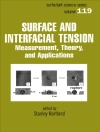Most people would be surprised at how ceramics are used, from creating cellular phones, radio, television, and lasers to its role in medicine for cancer treatments and restoring hearing. The Magic of Ceramics introduces the nontechnical reader to the many exciting applications of ceramics, describing how ceramic material functions, while teaching key scientific concepts like atomic structure, color, and the electromagnetic spectrum. With many illustrations from corporations on the ways in which ceramics make advanced products possible, the Second Edition also addresses the newest areas in ceramics, such as nanotechnology.
Tabella dei contenuti
Preface & Acknowledgments for the First Edition vii
Preface & Acknowledgments for the Second Edition ix
Foreword to the First Edition, by Bonnie J. Dunbar, Ph.D. xi
Introduction xiii
1 Our Constant Companions 2
2 From Pottery to the Space Shuttle 14
3 The Beauty of Ceramics 34
4 Ceramics and Light 56
5 Amazing Strength 80
6 Ceramics and the Electronics Age 108
7 Piezo Power 132
8 Medical Miracles 148
9 Ceramics and the Modern Automobile 170
10 Heat Beaters 186
11 The Hardest Materials in the Universe 208
12 Energy Conservation and Conversion Efficiency 228
13 From Pollution Control to Zero Pollution 252
14 What’s New and What’s Coming 270
Conclusion 291
Circa l’autore
DAVID W. RICHERSON, MS, is a leading expert in the field of ceramics. He was an early pioneer in the development of high-strength silicon nitride, introducing grain boundary engineering and the use of fracture surface analysis to improve materials. His experience spans academia and private industry as well as his own consulting firm. Mr. Richerson currently teaches at the University of Utah and is the Manager of Minerals for the Natural History Museum of Utah. He continues an active schedule of outreach, bringing science and technology to elementary and high school students.












